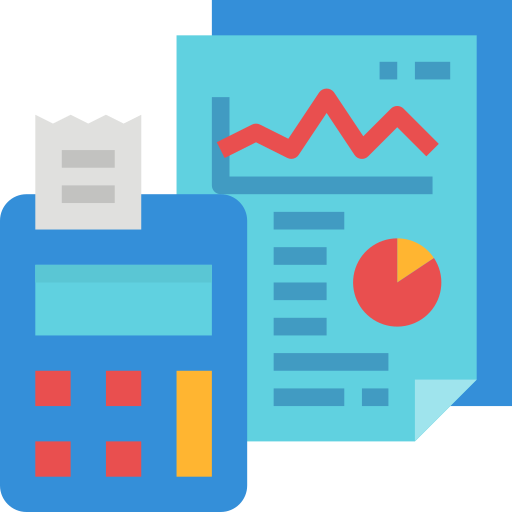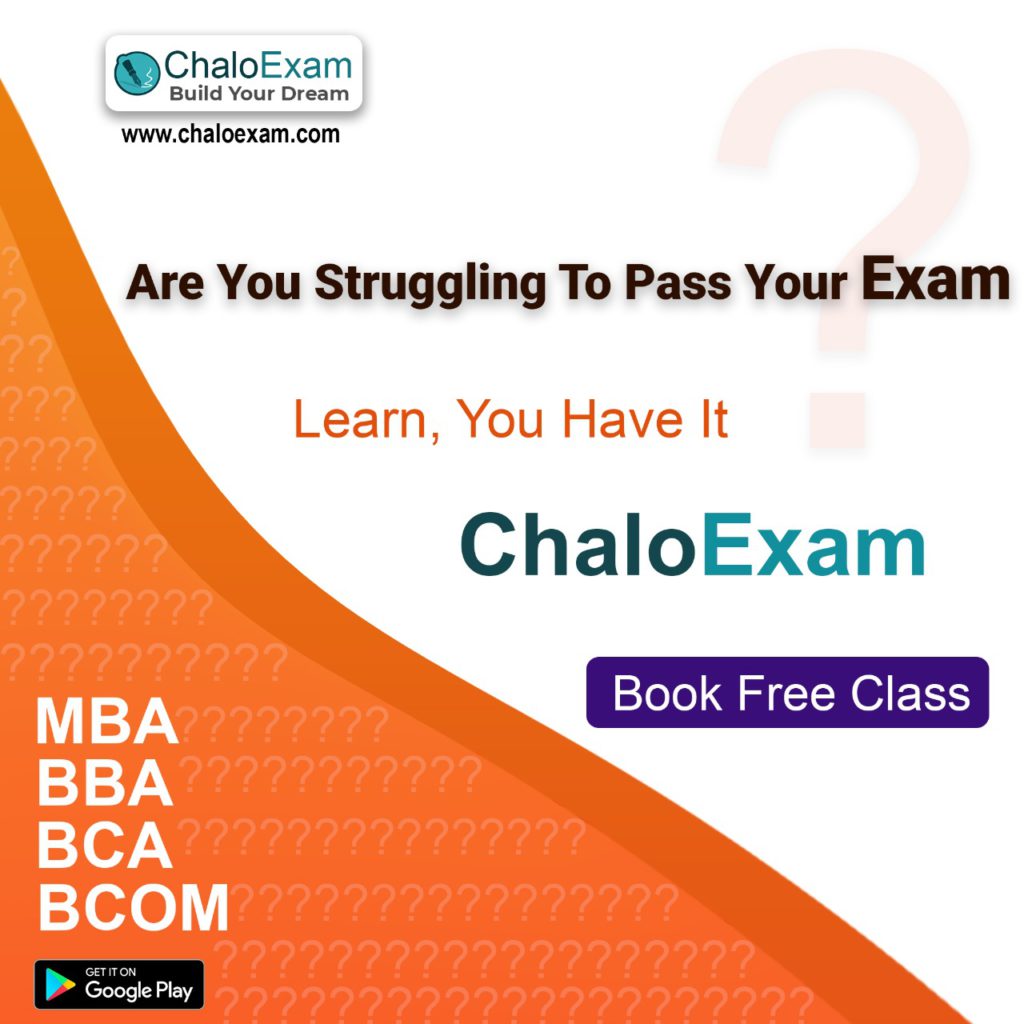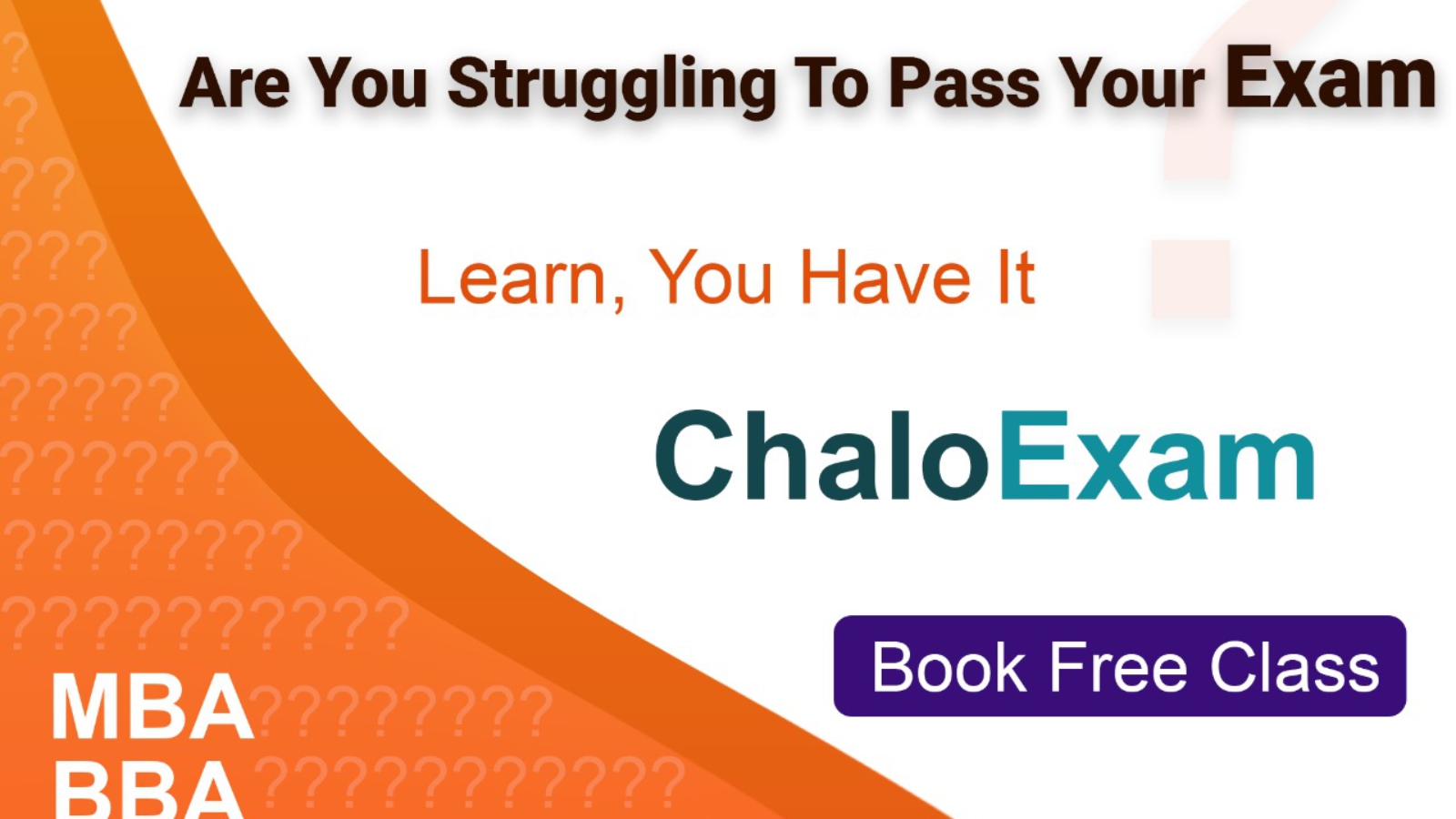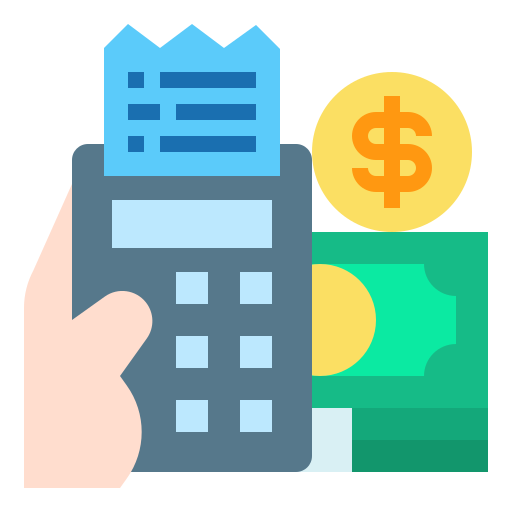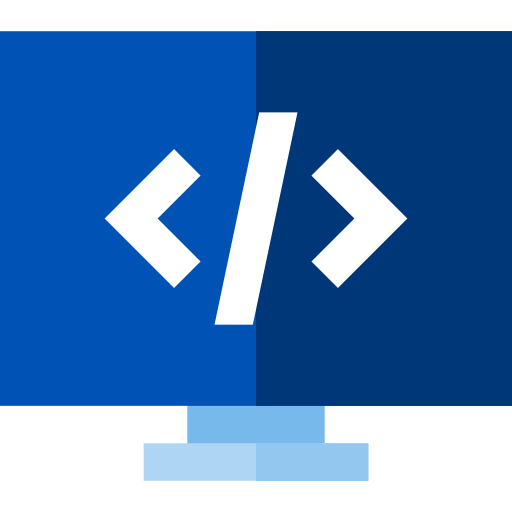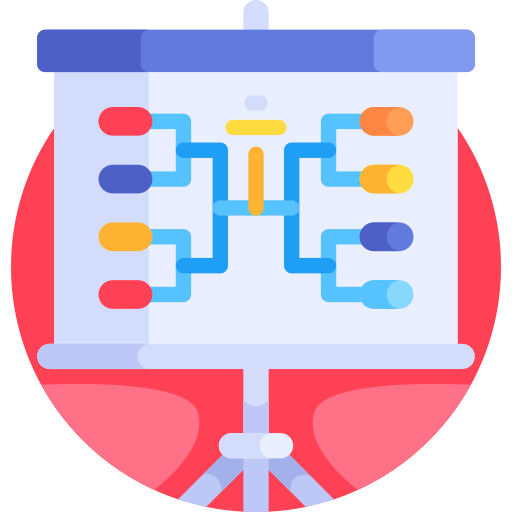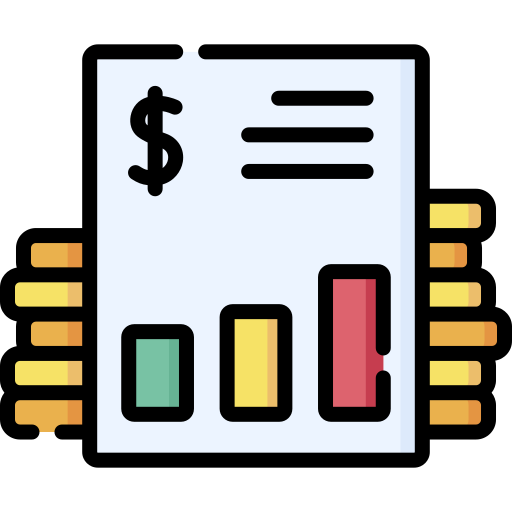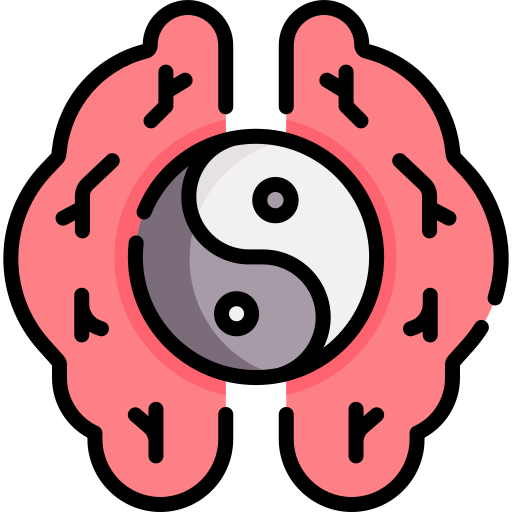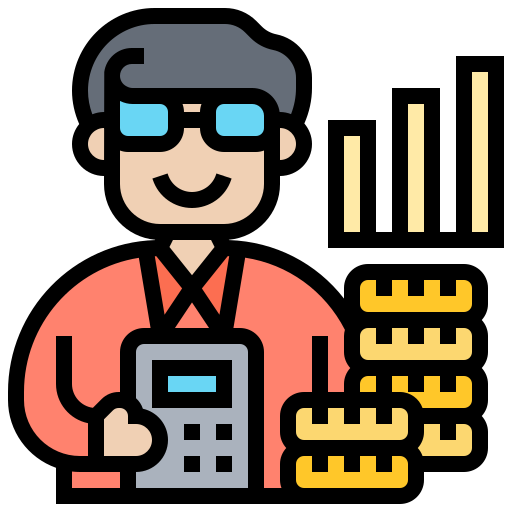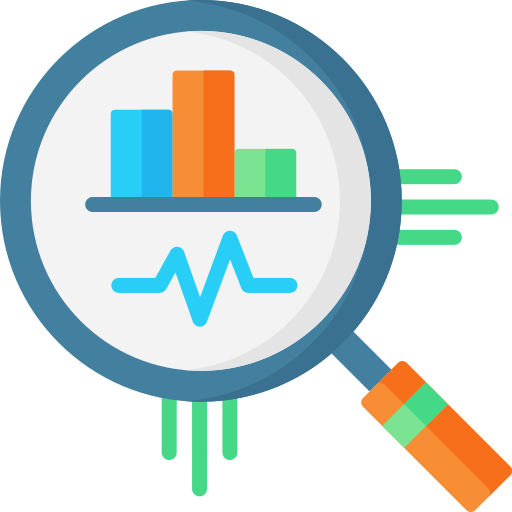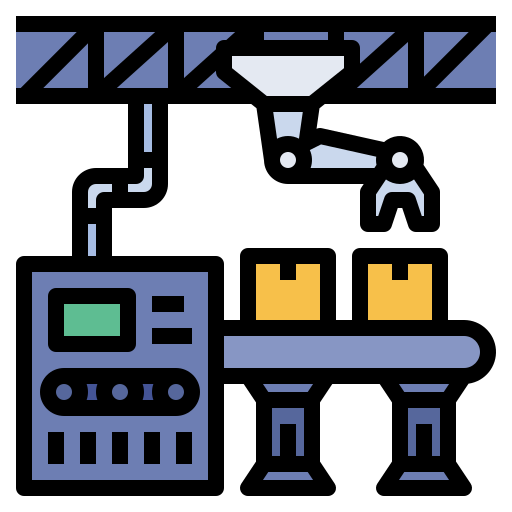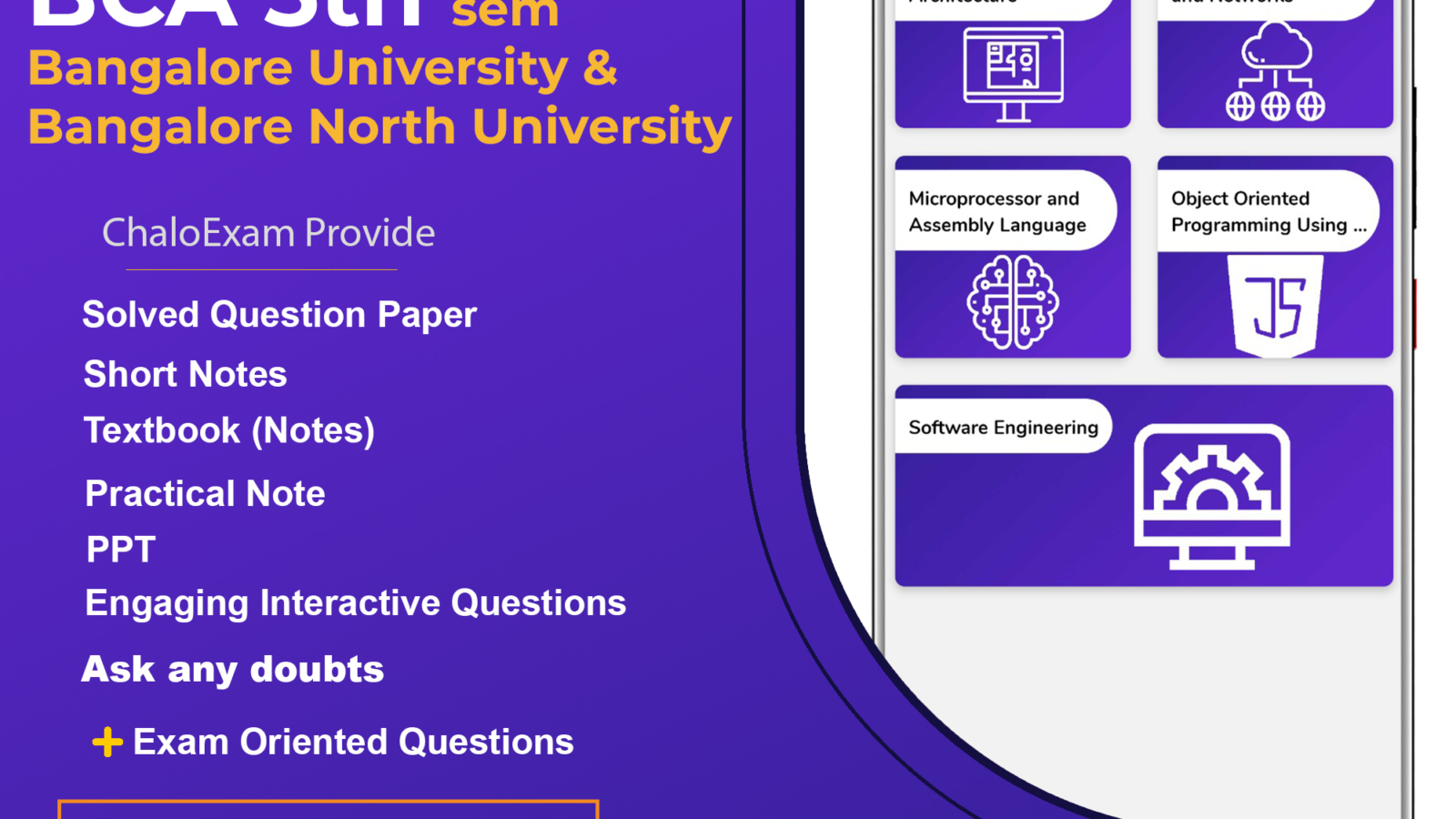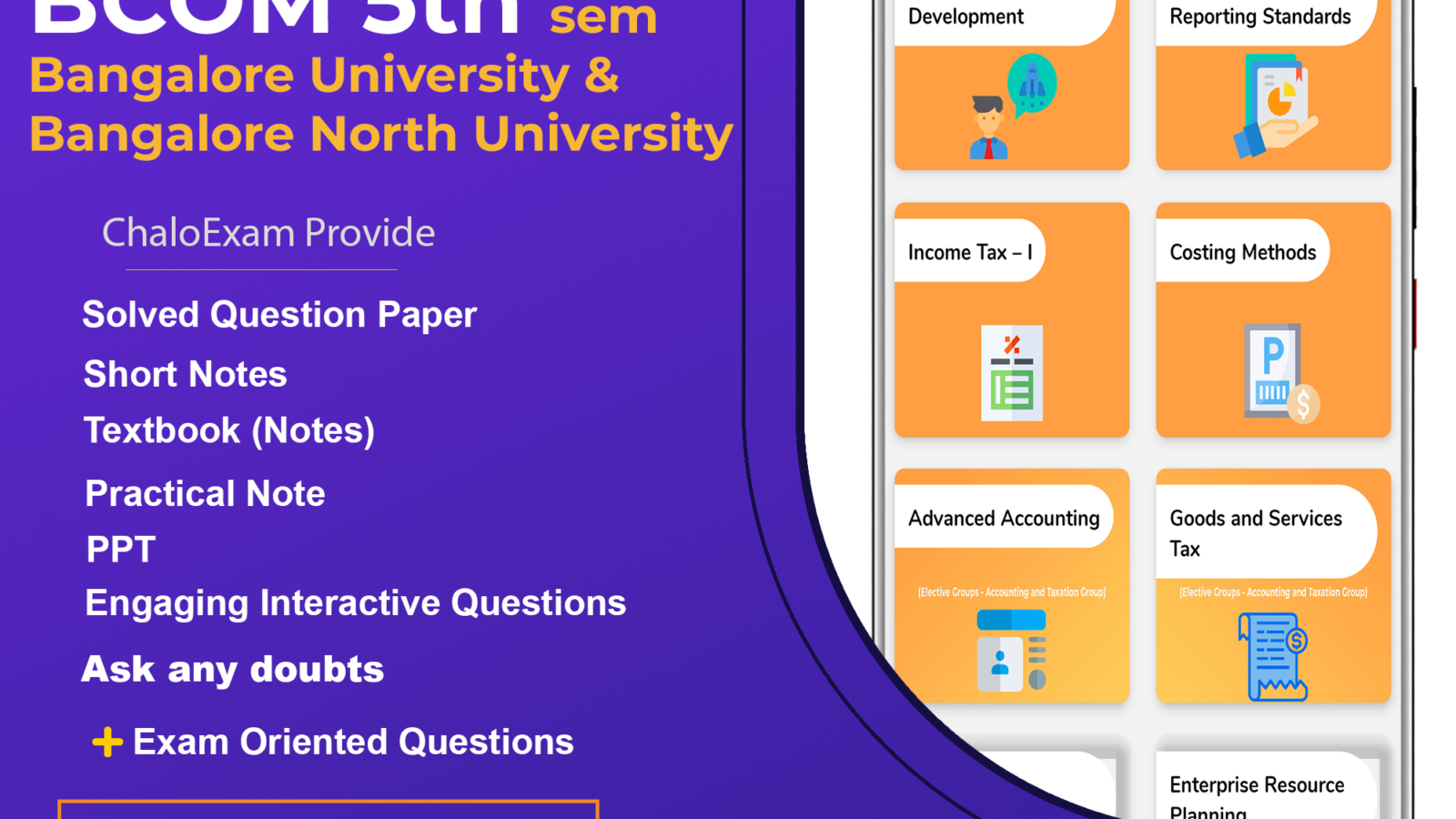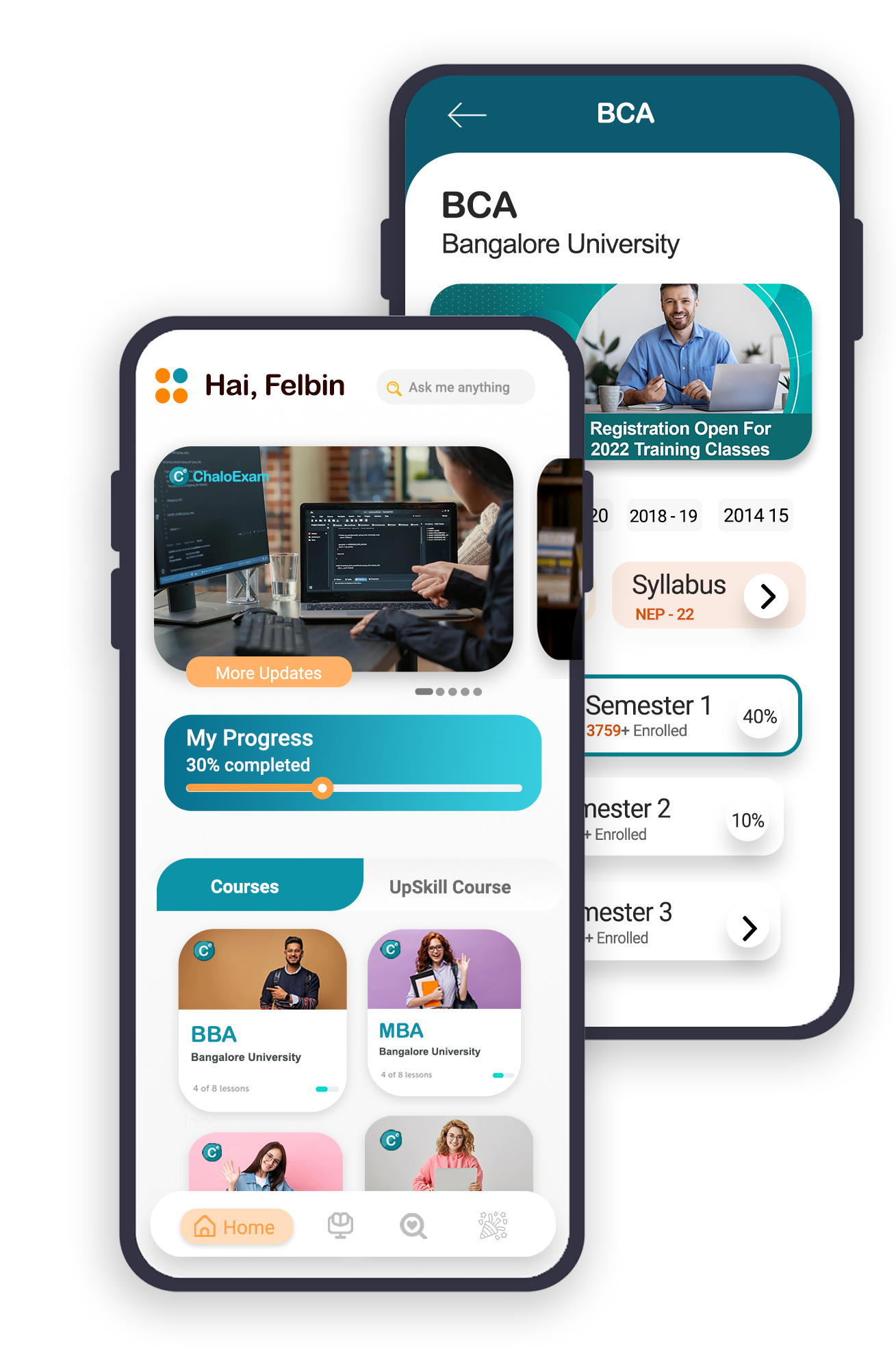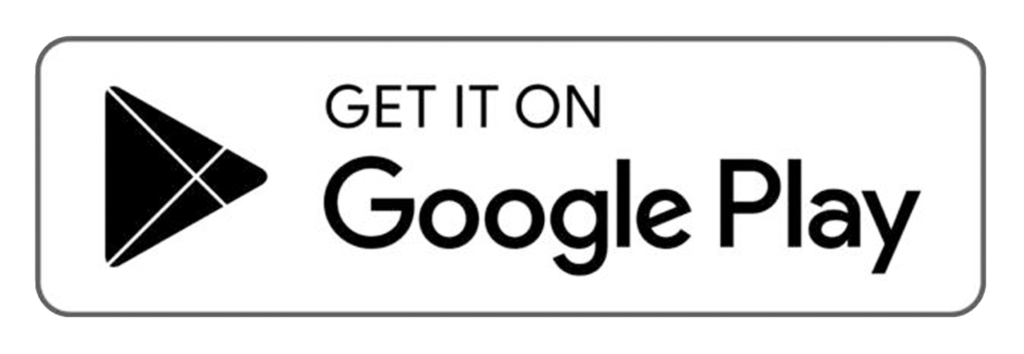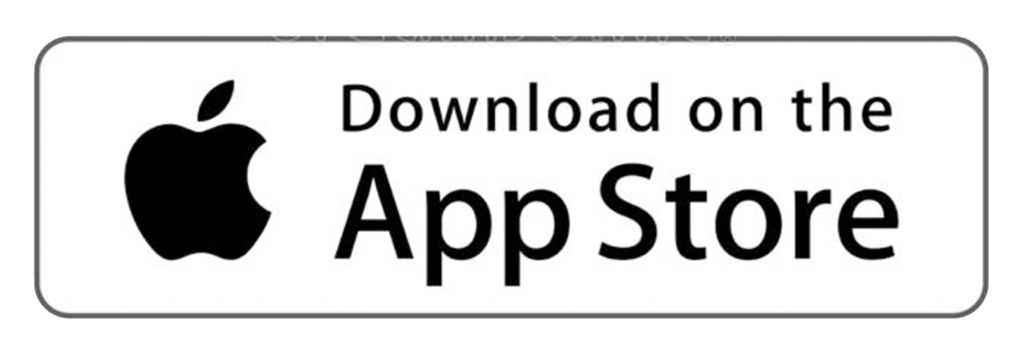Book Free Classes
Bangalore University 4th Sem BBA Study Materials
Download free BBA 4th sem module wise notes, latest solved question papers, previous 5 years question paper till 2021, model question papers, easy notes, exam oriented notes are available on this website chaloexam.com of Bangalore University
Business Research Methods

Business Research Methods
Marketing Management
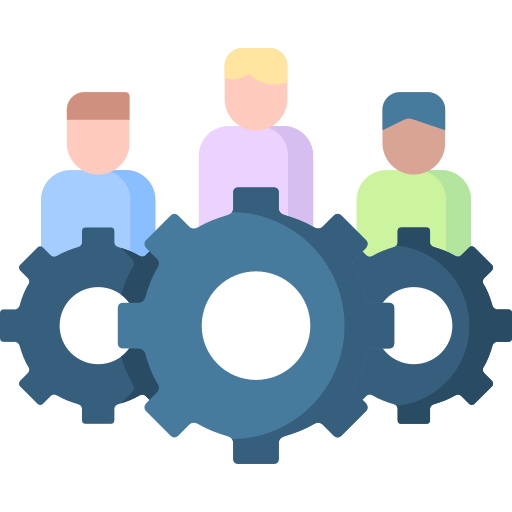
Marketing Management
Financial Management
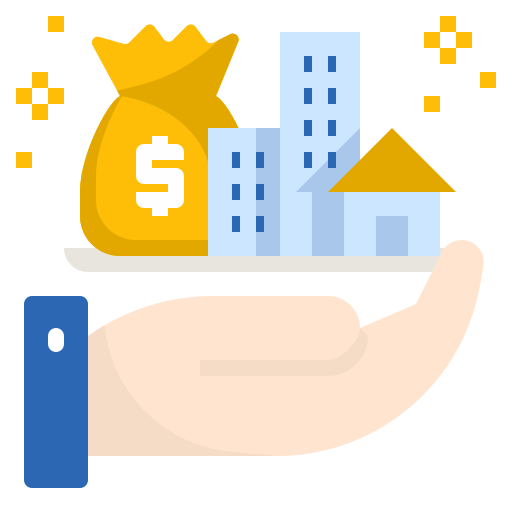
Financial Management
Services Management

Services Management
Banking Regulations & Operations
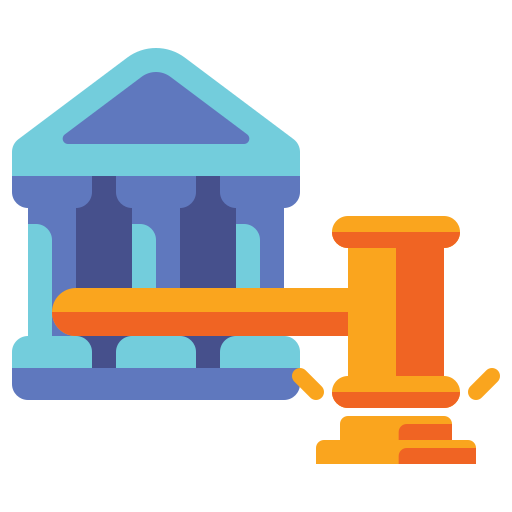
Banking Regulations & Operations
Bangalore University BBA syllabus 2021
Syllabus
4.2 BUSINESS RESEARCH METHODS
OBJECTIVE
The objective is to create an awareness of the Process of Research, the tools and techniques of research and generation of reports
Unit 1: INTRODUCTION TO RESEARCH 14Hrs Meaning – Objectives – Types of Research – Scope of Research – Research Approaches – Research Process – Research Design – Research Methods Vs Research Methodology - Steps in Research – Problem Formulation – Statement of Research Objective – Exploratory – Descriptive – Experimental Research.
Unit 2: METHODS OF DATA COLLECTION 08 Hrs Observational and Survey Methods – Field Work Plan - Administration of surveys - Training field investigators - Sampling methods - Sample size.
Unit 3: TOOLS FOR COLLECTION OF DATA 08 Hrs Questionnaire Design; Attitude measurement techniques – Motivational Research Techniques – Selection of Appropriate Statistical Techniques
Unit 4: STATISTICAL METHODS 18 Hrs Tabulation of data - Analysis of data –Testing of Hypothesis, Advanced techniques – ANOVA, Chi-Square - Discriminant Analysis - Factor analysis, Conjoint analysis - Multidimensional Scaling - Cluster Analysis (Concepts Only).
Unit 5: REPORT WRITING 08 Hrs Types of Reports, Business, Technical and Academic Report writing – Methodology Procedure – Contents – Bibliography
SKILL DEVELOPMENT
- Illustrate different types of samples with examples
- Construct a questionnaire for collection of primary data keeping in mind the topic chosen for research ● Narrate your experience using observation technique
- Diagrammatically present the information collected through the questionnaire
BOOKS FOR REFERENCE
- O.R.Krishnaswamy; Research methodology in Social Sciences, HPH, 2008.
- R. Divivedi: Research Methods in Behavior Science, Macmillan India Ltd., 2001.
- J.K. Sachdeva: Business Research Methodology HPH
- S.N. Murthy, V. Bhojanna: Business Research Methods Excel Books
- Levin &Rubin: Statistics for Management, Prentice Hall of India, 2002
- Gupta S; Research Methodology and Statistical Techniques, Deep & Deep Publication (P) Ltd., 2002 7. Thakur D: Research Methodology in Social Sciences, Deep & Deep Publications (P) Ltd.,1998. 8. Tripathi P.C:A Textbook of Research Methodology, Sultan Chand & Sons, 2002. 9. Cooper: Business Research Methods 6th edition, MC Graw Hill,
- C.R. Kothari, Research Methodology, Vikas Publications
- Usha Devi N, Santhosh Kumar - Business Research Methodology
32
4.3 MARKETING MANAGEMENT
OBJECTIVE
The objective is to enable students to understand the concept of marketing and its applications and the recent trends in Marketing.
Unit 1: INTRODUCTION TO MARKETING 10 Hrs Meaning & Definition – Goals – Concepts of Marketing – Approaches to Marketing – Functions of Marketing.
Recent trends in Marketing - Introduction, E-business – Tele-marketing – M-Business – Green Marketing – Relationship Marketing – Retailing – Concept Marketing and Virtual Marketing (Meaning Only).
Unit 2: MARKETING ENVIRONMENT (MACRO) 10 Hrs Meaning – Demographic – Economic – Natural – Technological - Political – Legal – Socio - Cultural Environment
Unit 3: MARKETING MIX 20 Hrs Meaning – Elements – Product – Product Mix – Product Line – Product Lifecycle – Product Planning – New Product Development – Failure of New Product – Branding – Packing and Packaging. Pricing – Objectives – Factors influencing Pricing Policy and Methods of Pricing. Physical Distribution – Meaning – Factors affecting Channel Selection – Types of Marketing Channels. Promotion – Meaning and Significance of Promotion – Personal Selling & Advertising (Meaning Only).
Unit 4: MARKET SEGMENTATION AND CONSUMER BEHAVIOUR 10 Hrs Meaning & Definition - Bases of Market Segmentation – Requisites of Sound Market Segmentation. Consumer Behaviour – Factors influencing Consumer Behaviour and Buying Decision Process.
Unit 5: CUSTOMER RELATIONSHIP MANAGEMENT 06 Hrs Meaning and Definition – Role of CRM – Advantages and Disadvantages
SKILL DEVELOPMENT
∙ Identify the product of your choice and describe in which stage of the product life cycle it is positioned. ∙ Suggest strategies for development of a product.
∙ Study of Consumer Behaviour for a product of your choice.
∙ Develop an Advertisement copy for a product.
∙ Prepare a chart for distribution network for different products.
BOOKS FOR REFERENCE
- P N Reddy & Appanniah, Marketing Management, HPH.
- Kuranakaran, Marketing Management, Himalaya Publishers.
- Rekha & Vibha, Marketing Management, VBH.
- Philip Kotler, Marketing Management, Prentice Hall.
33
- Bose Biplab, Marketing Management, Himalaya Publishers.
- J.C. Gandhi, Marketing Management, Tata McGraw Hill.
- Ramesh & Jayanti Prasad: Marketing Management, I.K. International
- William J. Stanton, Michael J.Etzel, Bruce JWalker, Fundamentals of Marketing, McGraw Hill Education.
- Sontakki, Marketing Management, Kalyani Publishers.
- K. Venkataramana, Marketing Management, SHBP.
- Dr. Alice Mani: Marketing Management, SBH.
34
4.4 FINANCIAL MANAGEMENT
OBJECTIVE
The objective is to enable students to understand the basic concepts of Financial Management and the role of Financial Management in decision-making.
Unit 1: INTRODUCTION TO FINANCIAL MANAGEMENT 10 Hrs Introduction – Meaning of Finance – Business Finance – Finance Function – Aims of Finance Function – Organization structure of finance - Financial Management – Goals of Financial Management – Financial Decisions – Role of a Financial Manager – Financial Planning – Steps in Financial Planning – Principles of a Sound Financial Planning.
Unit 2: TIME VALUE OF MONEY 10 Hrs Introduction – Meaning & Definition – Need – Future Value (Single Flow – Uneven Flow & Annuity) – Present Value (Single Flow – Uneven Flow & Annuity)– Doubling Period – Concept of Valuation – Valuation of Bonds & Debentures – Preference Shares – Equity Shares – Simple Problems.
Unit 3: FINANCING DECISIONAND INVESTMENT DECISION 16Hrs Financing Decisions: Introduction – Meaning of Capital Structure – Factors influencing Capital Structure – Optimum Capital Structure – EBIT – EBT – EPS – Analysis – Leverages – Types of Leverages – Simple Problems.
Investment Decisions: Introduction – Meaning and Definition of Capital Budgeting – Features – Significance – Process – Techniques – Payback Period – Accounting Rate of Return – Net Present Value – Internal Rate of Return – Profitability Index - Simple Problems
Unit 4: DIVIDEND DECISION 08 Hrs Introduction – Meaning and Definition – Determinants of Dividend Policy – Types of Dividends – Provisions under Campiness Act in relation to dividends.
Unit 5: WORKING CAPITAL MANAGEMENT 12 Hrs Introduction – Concept of Working Capital – Significance of Adequate Working Capital – Evils of Excess or Inadequate Working Capital – Determinants of Working Capital – Sources of Working Capital –Cash Management – Receivables Management – Inventory Management,.
SKILL DEVELOPMENT
∙ Draw the organization chart of Finance Function
∙ Illustrate operating cycle for at least 2 companies of your choice.
∙ Evaluate the NPV of an investment made in any one of the capital projects with imaginary figures for 5 years.
∙ Prepare an ageing schedule of debtors with imaginary figures.
∙ Capital structure analysis of companies in different industries
35
BOOKS FOR REFERENCE
- Reddy, Appananaih: Financial Management., HPH
- Sudrashan Reddy – Financial Management, HPH.
- Venkataraman R _ Financial Management, VBH.
- S N Maheshwari, Financial Management., Sultan Chand.
- R.M.Srivastava : Financial Management –Management and Policy, Himalaya Publishers. 6. Khan and Jain, Financial Management, Tata McGraw Hill.
- Dr. K.V. Venkataramana, Financial Management, SHB Publications. 8. Sudhindra Bhatt: Financial Management, Excel Books.
- Sharma and Sashi Gupta, Financial Management, Kalyani Publication. 10. M.GangadharRao& Others: Financial Management, Himalaya Publishers. 11. I M Pandey, Financial Management, Vika Publication House.
- Prasanna Chandra, Financial Management, Tata McGraw Hill.
- K. Venkataramana, Financial Management, SHBP.
- Dr. Alice Mani: Financial Management, SBH.
36
4.5 SERVICES MANAGEMENT
OBJECTIVE
The objective is to familiarize the students with different services and prepare them with requisite skills to manage services.
Unit 1: INTRODUCTION TO SERVICES MANAGEMENT 08 Hrs Meaning of Services – Concepts - Characteristics of Services – Classification of Services – Growth of Service Sector.
Unit 2: SERVICES MARKETING 18Hrs Meaning – Differences between Products and Services – Importance of Services Marketing – Marketing Mix for Services – 7 P‟s (in detail) Managing Demand and Supply in Service Industry. Service Delivery Process: Role of Customer in Service delivery process- Quality issues in Services – GAP Model, Managing moments of Truth
Unit 3: TOURISM AND HOSPITALITY SERVICES 12 Hrs Introduction – Evolution of Tourism Industry – Concept and Nature of Tourism – Significance of Tourism Industry- Market segmentation in tourism- Marketing mix of Tourism - Recent Trends in Tourism. Hospitality Services: Types of Hotels –Types of Accommodation – Departments in Hotels – Customer care in Hospitality Industry.
Unit 3: BANKING AND INSURANCE SERVICES 12Hrs Banking - Introduction – Traditional Services – Modern Services – Recent Trends in Banking Services. Insurance - Introduction – Meaning and Definition of Insurance – Types of Insurance – Life Insurance – Products of Life Insurance – General Insurance – Types of General Insurance – Insurance Agents and other Intermediaries .
Unit 5: HEALTHCARE AND INFORMATION TECHNOLOGY ENABLED SERVICES (ITES)
6 Hrs
Hospitals – Evolution of Hospital Industry – Nature of Service – Risk involved in Healthcare Services – marketing of medical services – Hospital extension services – Pharmacy, nursing – Medical Transcription. ITES: Introduction – Growth, Types, Job opportunities in ITES.
SKILL DEVELOPMENT
∙ Prepare a chart on conditions to be complied for Star Hotel Status.
∙ Procure any two insurance policies (Xerox) and paste them in the record.
∙ Visit and Travel and Tour agencies and prepare organization chart.
∙ Interact with tourist operators and identify the areas of tourism management. ∙ Prepare a chart showing customer service rendered by at least two MF. (Preferably a comparative chart) ∙ Procedures of Railway ticket booking with specimen of reservation/cancellation slip. ∙ Procedure for Air ticket booking both domestic and International.
37
BOOKS FOR REFERENCE
- S.M. Jha: Services Marketing HPH
- Dr. Shajahan. S; Service Marketing (Concept, Practices & Cases); Himalaya Publishing House; Mumbai; First Edition 2001.
- Sunil B Rao – Service Management , VBH.
- Shanker, Ravi; Services Marketing – the Indian Perspective; Excel Books, New Delhi; First Edition; 2002
- Dutta : Service Management, I.K. International
- Cengiz Hakseveretal – „Service Management and Operations‟; Pearson Education. 7. K. Venkataramana, Service Management, SHBP.
38
4.6 BANKING REGULATIONS &OPERATIONS
OBJECTIVE
The objective is to familiarize the students to understand the law and practice of banking.
Unit 1: COMMERCIAL BANKS 08 Hrs Introduction – Role of Commercial Banks – Functions of Commercial Banks – Primary Functions and Secondary Functions – Credit Creation of Commercial Banks – Investment Policy of Commercial Banks – Profitability of Commercial Banks. Regulation and Control of Commercial Banks by RBI
Unit 2: BANKER AND CUSTOMER RELATIONSHIP 20Hrs Banker and Customer: Meaning of Banker and Customer – Banking Company – General and Special Relationships between Banker and Customer.
Types of Customers and Account holders: Procedure and Practice in opening and conducting the accounts of customers particularly individuals including minors - Joint Account Holders. Partnership Firms - Joint Stock companies with limited liability-Executors and Trustees-Clubs and Associations-Joint Hindu Family
Unit 3: NEGOTIABLE INSTRUMENTS 08Hrs Introduction – Meaning & Definition – Features – Kinds of Negotiable Instruments (Meanings only) – Cheques – Meaning & Definition – Features - Parties – Crossing of cheques – types of crossing. Endorsements – Meaning – Essentials – Kinds of Endorsement.
Unit 4: PAYING BANKER AND COLLECTING BANKER 10 Hrs Paying Banker – Meaning – Precautions – Statutory Protection to the Paying Banker – Dishonor of Cheques – Grounds of Dishonor – Consequences of wrongful dishonor of Cheque. Collecting Banker – Meaning – Duties & Responsibilities of Collecting Banker –Statutory Protection to Collecting Banker
Unit 5: PRINCIPLES OF BANK LENDING 10 Hrs Different kinds of borrowing facilities granted by banks - Loans, Cash Credit, Overdraft, Bills Purchased, Bills Discounted, Letters of Credit - Types of Securities – NPA (Meaning only).Sound principles of Bank Lending.
SKILL DEVELOPMENT
∙ Collect and fill account opening form of SB A/c or Current A/c
∙ Collect and fill pay in slip of SB A/c or Current A/c.
∙ Draw specimen of Demand Draft.
∙ Draw different types of endorsement of cheques.
∙ Past specimen of Travelers Cheques / Gift Cheques / Credit Cheques.
∙ List customer services offered by atleast 2 banks of your choice.
39
BOOKS FOR REFERENCE
- Gordon &Natrajan: Banking Theory Law and Practice, HPH.
- Maheshwari. S.N.: Banking Law and Practice, Kalyani Publishers
- Gagendra Naidu, S. K. Poddar , Law and Practice of Banking, VBH.
- M. Prakash – Banking Regulation & Operations, VBH.
- Tannan M.L: Banking Law and Practice in India, Wadhwa and company
- P.SubbaRao ; Bank Management, HPH.
- Herbert Percival Sheldon, Peter J. Fidler, Herbert B. Sheldon, Sheldon‟s Practice and Law of Banking, Mac Donald and Evans
- V. Iyengar; Introduction to Banking, Excel Books.
- Kothari N. M: Law and Practice of Banking.
- Shekar. K.C: Banking Theory Law and Practice, VBH.
- Venkataramana. K, Banking Regulation, SHBP.
40
4.7 COST ACCOUNTING
OBJECTIVE
The objective of this subject is to familiarize students with the various concepts and element of cost.
Unit 1: INTRODUCTION TO COST ACCOUNTING 10 Hrs Introduction – Meaning & Definition of Cost, Costing and Cost Accounting – Objectives of Costing - Comparison between Financial Accounting and Cost Accounting – Application of Cost Accounting – Designing and Installing a Cost Accounting System – Cost Concepts - Classification of Costs – Cost Unit – Cost Center – Elements of Cost – Preparation of Cost Sheet – Tenders and Quotations.
Unit 2: MATERIAL COST CONTROL 14Hrs Meaning – Types – Direct Material – Indirect Material - Material Control – Purchasing Procedure – Store Keeping – Techniques of Inventory Control – Setting of Stock Levels – EOQ – ABC Analysis – VED Analysis – Just In-Time – Perpetual Inventory System – Documents used in Material Accounting - Methods of Pricing Material Issues – FIFO – LIFO – Weighted Average Price Method and Simple Average Price Method.
Unit 3: LABOUR COST CONTROL 10 Hrs Meaning – Types – Direct Labour – Indirect Labour – Timekeeping – Time booking – Idle Time – Overtime – Labour Turn Over. Methods of Labour Remuneration - Time Rate System – Piece Rate System – Incentive Systems – Halsey plan – Rowan Plan – Taylor‟s differential Piece Rate System and Merrick‟s Differential Piece Rate System – Problems
Unit 4: OVERHEAD COST CONTROL 14Hrs Meaning and Definition – Classification of Overheads – Procedure for Accounting and Control of Overheads – Allocation of Overheads – Apportionment of Overheads – Primary Overhead Distribution Summary – Secondary Overhead Distribution Summary – Repeated Distribution Method and Simultaneous Equations Method – Absorption of Factory Overheads – Methods of Absorption – Machine Hour Rate – Problems.
Unit 5: RECONCILIATION OF COST AND FINANCIAL ACCOUNTS 08Hrs Need for Reconciliation – Reasons for differences in Profit or Loss shown by Cost Accounts and Profit or Loss shown by Financial Accounts – Preparation of Reconciliation Statement and Memorandum Reconciliation Account.
SKILL DEVELOPMENT
∙ Classification of costs incurred in the making of a product.
∙ Identification of elements of cost in services sector.
∙ Cost estimation for the making of a proposed product.
∙ Documentation relating to materials handling in a company.
∙ Collection and Classification of overheads in an organization.
∙ Discuss the reasons for LTO in organizations..
41
BOOKS FOR REFERENCE
- M. N. Arora: Cost Accounting, HPH
- J.Madegowda: Advanced Cost Accounting, HPH.
- N.K. Prasad: Cost Accounting, Book Syndicate.
- Gouri Shankar: Practical Costing, HPH.
- KhannaPandey&Ahuja : Practical Costing, Sultan Chand.
- K. S. Thakur: Cost Accounting, New Century Book House Pvt. Ltd. 7. M.L. Agarwal: Cost Accounting, Sahithya Bhawan Publications. 8. Palaniappan & Harihara : Cost Accounting I.K. International 9. Jain &Narang: Cost Accounting, Kalyani Publishers.
- S.P. Iyengar: Cost Accounting, Sultan Chand.
- S.N. Maheshwari: Cost Accounting, Mahaveer Publishers.
- Horngren: Cost Accounting – A Managerial Emphasis, Prentice Hall. 13. Dr.A. Sundra Rajan & Dr. K. Venkataramana, SHB Publications. 14. R.G. Saha & Others – Cost Accounting
- V. Rajesh Kumar & R.K. Sreekantha, Cost Accounting – I, Vittam Publications. 16. Dr. Alice Mani: Cost Accounting, SBH.


